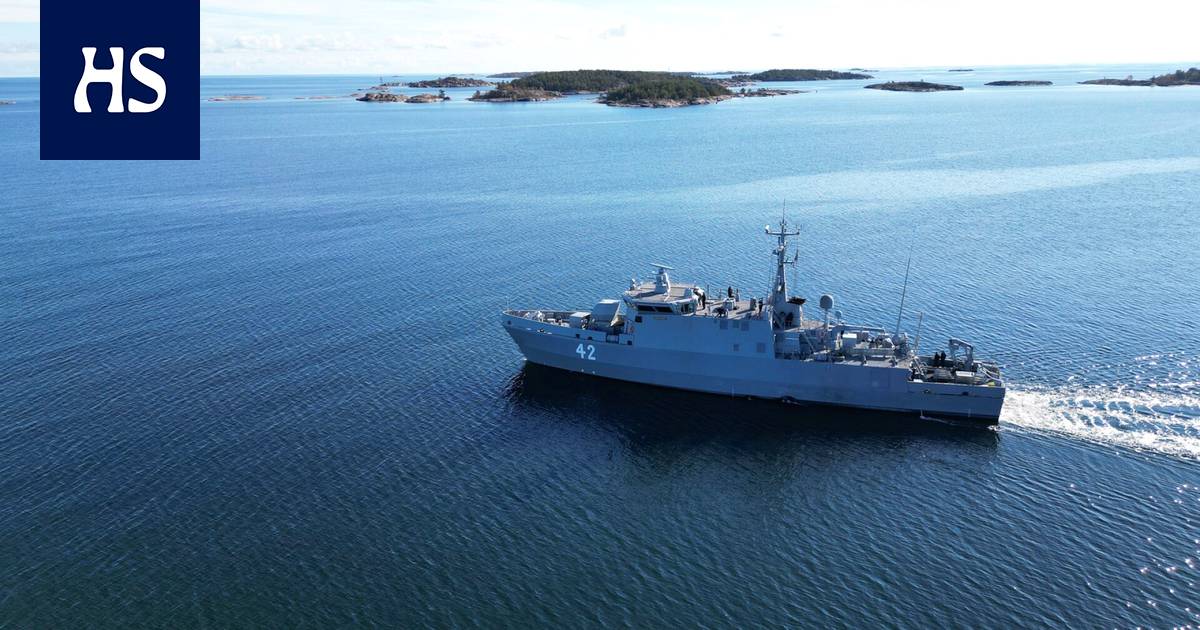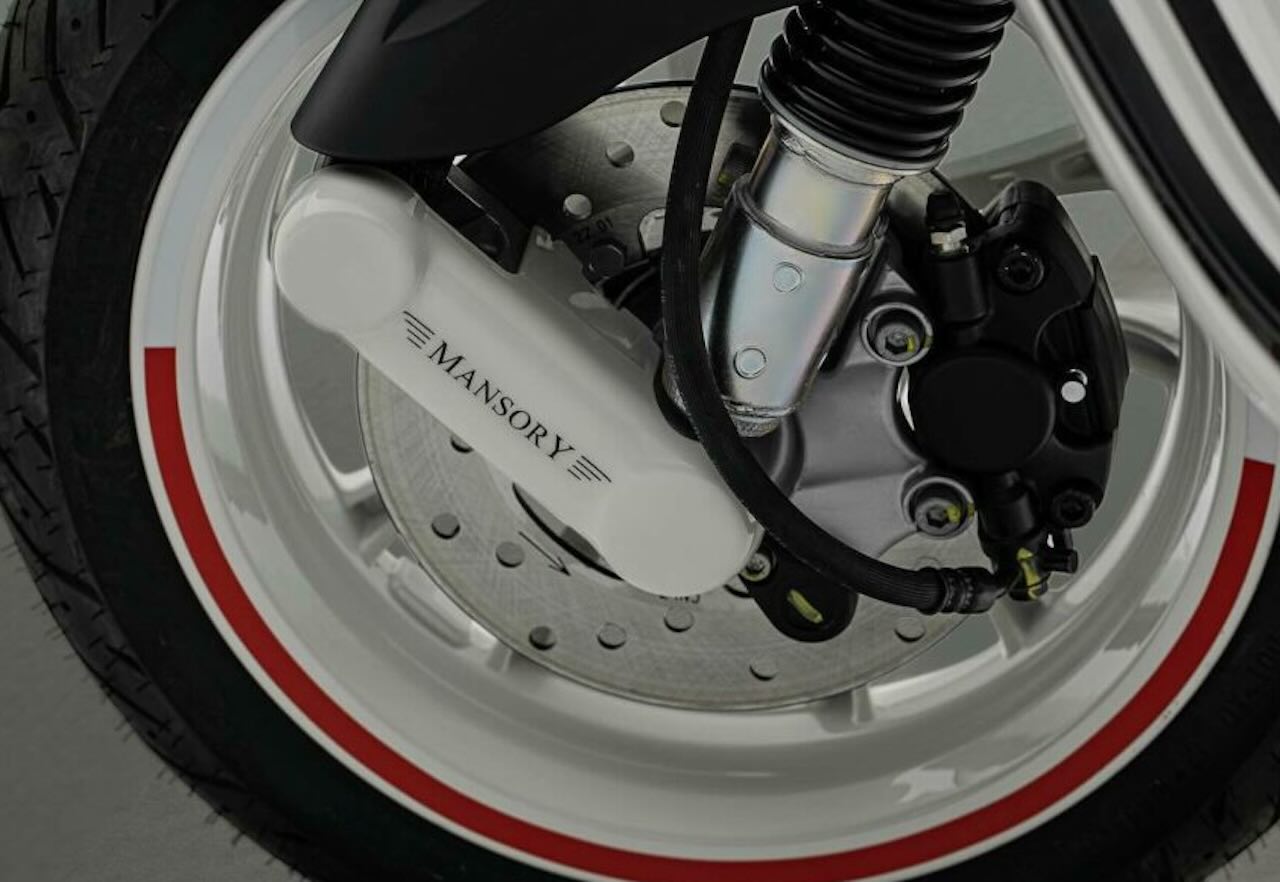Pitchfork
Hankoniemi On a September day in the outer harbor, Finnish, French and fluent rally English were spoken.
Two gray warships in very similar condition and looking ready to go were moored at the pier.
It was about to start between the Finnish Coastal Navy and the French Navy cross poll.
French The minesweeper Céphée had arrived in Hankoniemi as a guest of the Finnish Navy. The Coastal Navy’s mine countermeasures vessel Vahterpää was the host.
The Baltic Sea showed its best side. It was almost October, but the sun was still shining from the sky like midsummer. The sea was also almost calm.
There seemed to be silver Frisbee discs floating on the surface of the water: hundreds of ear jellyfish had risen to the surface for the day. They hunted for the last time until, as autumn progressed, they would drift out to sea and die.
“That’s the richness of this job,” muttered the mine countermeasures squadron commander Henry Kummala. “Every day is different.”
French mine countermeasures vessel Céphée leaving for training off Hanko. The ship originally belonged to the Belgian Navy.
Crosspoll is a naval term that could be loosely translated as exchange of experiences or, more literally, cross-pollination.
In it, the ships briefly exchange their crew members with each other. The purpose is to learn new things and pass on information about different practices among partners and allies.
In Hankoniemi, three Frenchmen transferred to Vahterpää for a day and three Finns respectively to a French ship.
Commander Henri Kummala watches the descent of the measuring device into the water in Vahterpää.
Céphée The trip to Finland was about showing the French flag, but not only that.
Céphée’s crew had come to study the Baltic Sea together with the Coastal Navy – the Baltic Sea is notoriously difficult for minesweepers.
The visit killed two birds with one stone, so to speak.
With their tricolor, the French supported Finland’s application to become a member of the military alliance NATO. This has also been done by many other NATO countries in recent months, most notably Britain, the United States and Germany.
This has been a conscious and active security policy, which is to be continued throughout next winter.
Vahterpää has sent a remote-controlled diving robot to investigate the object found on the seabed. The ship’s boat has also been sent with the robot to ensure that there are no collisions with civilian traffic.
On the other hand the crew of the French ship got to know for the first time what special features are associated with mine hunting in the northern Baltic Sea.
“In the conditions of the Baltic Sea, our expertise is unique, because especially in Finnish waters, the environment of mine countermeasures is very challenging,” said Vahterpää’s commander, Lt. Henri Savisaari.
The most important tools for mine hunting, i.e. echo sounders, are based on the propagation and reflection of sound in water.
“Because of the seasons, we have challenging water sound conditions, variable bottom quality and very variable visibility conditions. Our expertise is appreciated.”
The Finns had now posed a demanding challenge to the French in the depths of the Baltic Sea. There was a training goal somewhere that had to be found by morning: cherche-moi, look for me!
Master of a French ship, captain in command Remi Vernay the enthusiasm in the new environment spoke to the eyes. Vernay wanted to train his crew and was prepared to search all night.
Vahterpää’s chief Henri Savisaari (left) and Céphée’s chief Remi Vernay talk on the bridge of Vahterpää.
Mine countermeasures vessels the mission is to retrieve mines from the sea and destroy them. Ships can also be used in seabed mapping and underwater search and identification tasks.
Sea mines are an important weapon especially for the Finnish Defense Forces. This is due to the conditions of the Baltic Sea and the coast of Finland, which are suitable for the use of mines.
Russia’s attack on Ukraine has also increased other countries’ interest in mines. Ukraine has effectively blocked the movements of the Russian fleet off Odessa with the help of mines. The mass use of mines is being studied again in different countries of the Baltic Sea.
Vahterpää’s remote-controlled diving robot is lowered into the water.
Finland The Navy has three Katanpää-class mine countermeasures vessels, of which Vahterpää, commissioned in 2017, is the newest.
The ships commissioned in the last decade are estimated to have taken Finland’s mine countermeasures to a whole new level. Ships built in Italy are said to be among the best in the world.
Mine countermeasures ships are popular places of service for conscripts. Wanted for modern ships.
“After all, this is also our best means of recruitment,” agreed squadron commander Kummala.
The remote-controlled diving robot returns from its mission after dark.
Céphée as a vessel belongs to a different generation than Vahterpää. At a quick glance, the ships look similar, but Céphée was already built in the 1980s.
Céphée is a Tripartite-class minesweeper. The name referring to the class three is related to the fact that the ship class was built by France, Belgium and the Netherlands as a collaboration. More than 30 ships belonging to the class were built in the last century.
The difference in age of the ships comes to the fore when they are visited by passengers. Vahterpää is equipped with such modern remotely controlled and independently moving underwater robots that the French ship does not have.
The age difference can be seen even in the most everyday things, such as in the captains’ cabins of the ships.
“The Céphée captain’s cabin is much smaller”, was also amazed by the French defense representative, lieutenant colonel Claire Bertaux With a maple top.
At Céphée, you come across a small sign that France is a sea power. The stuffed camel on the bridge is a reminder that the ship spent six months in Abu Dhabi during the coronavirus pandemic.
Sergeant Nico Hänninen lowers an oblique sonar meter into the sea.
Naval forces has placed one Katanpää-class mine countermeasures vessel in the readiness pool of NATO’s rapid response forces’ supplementary operation, i.e. NATO Response Force (NRF), for this year.
However, being part of the readiness pool of NATO’s rapid response force does not mean that the Finnish mine countermeasures vessel will untie its rope and go on a crisis management operation as soon as NATO blows the whistle. Participation in the operation always requires a separate political decision.
Currently, the name ship of the class, Katanpää, is in NRF readiness.
Captain Lieutenant Henri Savisaari, how does NRF readiness show up in the ship’s everyday life?
“The NRF year is not terribly different from a normal year. We have planned how the personnel would be assembled on the mine countermeasures vessel, how it would be trained and how it would be equipped. Otherwise, the action plan for that year does not deviate from normal.”
According to Savisaari, Merivoimat has identified the persons from the mine countermeasures squadron who want to participate in the NRF readiness. Conscript soldiers have also been asked about their willingness to join NATO’s rapid response team when they return home.
“We already know which reservists placed on the ship would be willing to go on the operation. Personnel are always defined on a case-by-case basis,” says Savisaari.
“In practice, the process does not happen quickly. At the point when the decision to activate the group is made, we nationally still have about 60 days to react to this and prepare the group for the task.”
The mine countermeasures vessel Vahterpää’s captain, Henri Savisaari, is a former Army tankman. He says he has not regretted his move to the Navy.
Clay island makes mine hunting sound like a simple operation.
First, a separate meter is used to find out the properties of seawater, such as water conductivity and temperature at different depths. The obtained values are fed to the sensors used, which are optimized for the conditions measured in this way.
Next, the mapping sensor is selected, i.e. in practice a transversal echo sounder.
The objects detected by the oblique sonar are analyzed, and finally the objects are identified, for example, by a diving robot.
In reality, doing all of the above requires a lot of planning, a high level of know-how, and a vessel whose construction has been compared to a modern submarine.
The Céphée has a board on which the various mines found by the ship’s crews over the decades are marked.
Did they find it? did the French take the practice goal placed in front of Hanko by the Finns at night, or did the visitors pull the trigger?
The mine countermeasures squadron’s commander Henri Kummala’s answer is diplomatic.
“The French found targets at the bottom and felt that the operation was useful.”
The echo sounder is lifted out of the water.
#NATO #NATOFinland #worlds #warship #field #sails #Baltic #Sea #ready #NATO #operations









